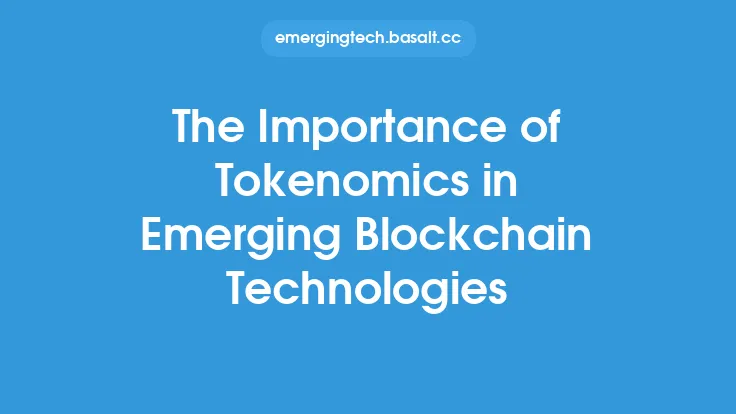The adoption of blockchain technology has been on the rise in recent years, with various industries exploring its potential to increase transparency, security, and efficiency. However, as blockchain technology becomes more widespread, the importance of governance in its adoption cannot be overstated. Governance in blockchain refers to the framework of rules, processes, and institutions that guide the development, implementation, and use of blockchain technology. In this article, we will explore the importance of governance in blockchain adoption, using industry examples and case studies to illustrate its significance.
What is Blockchain Governance?
Blockchain governance refers to the system of rules, processes, and institutions that govern the development, implementation, and use of blockchain technology. It encompasses a range of activities, including decision-making, conflict resolution, and standard-setting. Effective governance is essential to ensure that blockchain technology is used in a way that is transparent, secure, and beneficial to all stakeholders. Blockchain governance involves a range of stakeholders, including developers, users, regulators, and industry leaders, who must work together to create a framework that promotes the responsible development and use of blockchain technology.
Industry Examples of Blockchain Governance
Several industries have already begun to adopt blockchain technology, and governance has played a critical role in their success. For example, the financial industry has been at the forefront of blockchain adoption, with many banks and financial institutions exploring its potential to increase efficiency and reduce costs. In this industry, governance has been essential to ensure that blockchain technology is used in a way that is compliant with regulatory requirements and industry standards. The Financial Industry Regulatory Authority (FINRA) has established a blockchain working group to explore the potential of blockchain technology and develop guidelines for its use.
Case Studies of Blockchain Governance
There are several case studies that illustrate the importance of governance in blockchain adoption. One example is the case of the Ethereum blockchain, which experienced a major crisis in 2016 when a decentralized autonomous organization (DAO) was hacked, resulting in the theft of millions of dollars' worth of ether. The crisis highlighted the need for effective governance in blockchain ecosystems, and the Ethereum community came together to develop a new governance framework that would prevent similar crises in the future. Another example is the case of the Hyperledger blockchain, which has established a governance framework that includes a technical steering committee, a board of directors, and a community-driven decision-making process.
Benefits of Effective Blockchain Governance
Effective governance is essential to ensure that blockchain technology is used in a way that is transparent, secure, and beneficial to all stakeholders. Some of the benefits of effective blockchain governance include increased trust and confidence in blockchain technology, improved security and reduced risk of errors or attacks, increased efficiency and reduced costs, and better decision-making and conflict resolution. Effective governance also promotes innovation and experimentation, as it provides a framework for developers and users to experiment with new use cases and applications.
Challenges of Implementing Blockchain Governance
Despite the importance of governance in blockchain adoption, there are several challenges to implementing effective governance frameworks. One of the main challenges is the decentralized nature of blockchain technology, which makes it difficult to establish a centralized governance framework. Another challenge is the lack of standardization and interoperability between different blockchain platforms, which can make it difficult to develop a governance framework that applies across multiple platforms. Additionally, the rapid evolution of blockchain technology can make it difficult to keep governance frameworks up to date and relevant.
Best Practices for Implementing Blockchain Governance
There are several best practices that can help organizations implement effective blockchain governance frameworks. One of the most important best practices is to establish a clear and transparent decision-making process, which includes input from all stakeholders. Another best practice is to develop a comprehensive governance framework that includes rules, processes, and institutions for guiding the development and use of blockchain technology. Organizations should also prioritize security and risk management, and establish a framework for conflict resolution and dispute resolution. Finally, organizations should prioritize community engagement and participation, and establish a framework for feedback and input from users and stakeholders.
Conclusion
In conclusion, governance is a critical component of blockchain adoption, and its importance cannot be overstated. Effective governance is essential to ensure that blockchain technology is used in a way that is transparent, secure, and beneficial to all stakeholders. By establishing a clear and transparent decision-making process, developing a comprehensive governance framework, prioritizing security and risk management, and prioritizing community engagement and participation, organizations can help ensure the successful adoption of blockchain technology. As the use of blockchain technology continues to evolve and expand, the importance of governance will only continue to grow, and it is essential that organizations prioritize governance in their blockchain adoption strategies.





